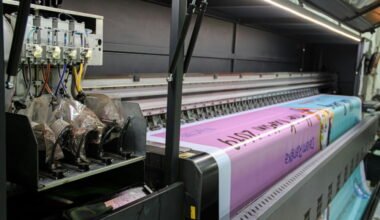Leak testing is a crucial part of quality assurance in industries like pharmaceuticals, food production, medical devices, and electronics manufacturing. Whether you’re packaging sterile syringes or vacuum-sealing perishable goods, any compromise in seal integrity can lead to contamination, recalls, or regulatory issues.
As production processes evolve and demand increases, manufacturers are faced with a critical decision: Should leak testing be manual, automated, or a combination of both? The right choice can affect throughput, compliance, cost-efficiency, and long-term quality outcomes.
In this article, we compare automated and manual leak testing methods, their advantages, limitations, and help you determine which is most suitable for your specific production environment.
Why Leak Testing Matters More Than Ever
Before diving into the comparison, it’s worth revisiting why leak testing is indispensable. Regardless of product type, packaging defects can lead to:
- Sterility breaches in pharmaceuticals and medical devices
- Reduced shelf life in food and beverage products
- Customer dissatisfaction and costly product recalls
- Loss of brand reputation and trust
- Non-compliance with ISO or GMP standards
With increased scrutiny from regulators and a push toward zero-defect manufacturing, leak testing has evolved from an optional step to a strategic priority.
Manual Leak Testing: Flexibility with Limitations
Manual leak testing has long been a go-to method for small-scale or specialized manufacturing environments. It typically involves visual inspections, immersion tests, or handheld devices that apply pressure to identify seal imperfections. While this approach offers flexibility and requires minimal investment, it is heavily dependent on operator skill and consistency. Over time, fatigue or subjectivity can introduce errors that compromise the reliability of results. For operations dealing with varied packaging formats or prototypes, manual testing may provide the adaptability needed—but it is not without trade-offs. When consistency, repeatability, and regulatory compliance are critical, the limitations of manual methods become more apparent.
Automated Leak Testing: Accuracy, Speed, and Scalability
Automated leak testing systems are designed to deliver objective, repeatable, and non-destructive results. These machines use advanced technologies such as vacuum decay, pressure differential, or high-voltage leak detection to identify even microscopic defects.
Key Advantages of Automation
- Speed and efficiency – Ideal for continuous production lines
- Non-destructive testing – Saves costs on product loss
- Consistent, validated results – Essential for GMP and ISO compliance
- Data logging and traceability – Supports audit and reporting requirements
- Minimal human intervention – Reduces labor cost and variability
Automated systems are scalable, adaptable to various packaging types, and can be integrated directly into existing production lines or used off-line for batch testing.
Cost Considerations: Short-Term vs Long-Term Thinking
A common hesitation among manufacturers is the upfront investment required for automated systems. While manual methods seem cheaper initially, the long-term implications of rework, product loss, and compliance risks can quickly outweigh those savings.
Let’s compare:
| Criteria | Manual Testing | Automated Testing |
| Initial cost | Low | Medium to high |
| Accuracy | Moderate (operator-based) | High (sensor-based) |
| Throughput | Low | High |
| Operator dependency | High | Minimal |
| Regulatory readiness | Limited | Strong compliance support |
| Scalability | Low | Easily scalable with production growth |
When compliance, reliability, and speed matter most, automation becomes less of a luxury and more of a necessity.
Which Is Right for You?
Choosing between automated and manual leak testing comes down to a few key questions:
- What is your production volume?
- How critical is seal integrity for your product’s safety and efficacy?
- Do you need documentation and traceability for audits?
- Are your packaging formats standardized or highly variable?
- What is your tolerance for product loss and downtime?
If you run a high-speed production line where precision and consistency are crucial—such as in sterile packaging or food safety—automated solutions offer a clear advantage. For lower-volume, R&D, or flexible packaging operations, manual testing may still play a role in supplemental or early-stage validation.
Seal Check: Advanced Leak Testing Solutions for Modern Production
No matter your industry or production scale, Seal Check offers a range of high-performance leak detection systems tailored to your needs. Their solutions are engineered to meet the demands of strict regulatory environments, optimize workflow efficiency, and detect defects with maximum accuracy.
From compact bench-top testers to fully integrated inline systems, Seal Check delivers:
Fast, reproducible, non-destructive results
Custom solutions for blister packs, pouches, trays, and more
Compliance with ISO, GMP, and FDA standards
Expert support and consultation for system integration
If you’re looking to enhance your packaging quality assurance process, Seal Check provides the tools, technology, and expertise to help you move forward with confidence.
Striking the Right Balance
Manual leak testing will always have its place—especially in flexible, small-scale, or early-stage production. But as regulatory standards tighten and customer expectations rise, automated solutions provide the speed, reliability, and scalability modern manufacturers require.
Understanding your process, constraints, and long-term goals is essential in making the right choice. And partnering with experienced solution providers like Seal Check can ensure that your decision supports quality, compliance, and growth—today and into the future.






